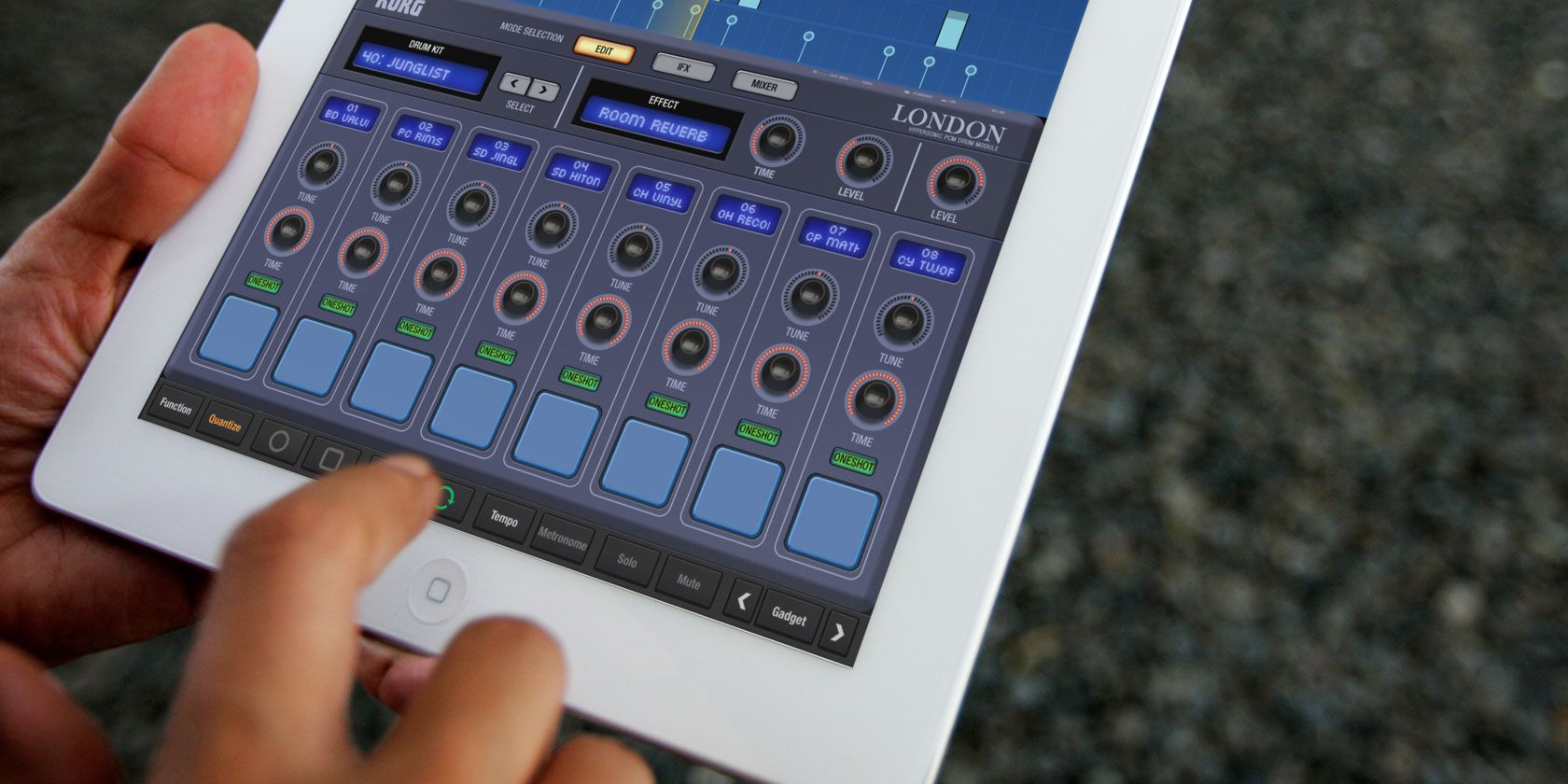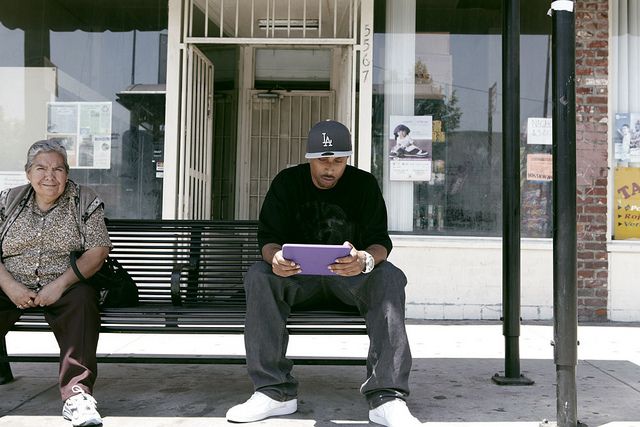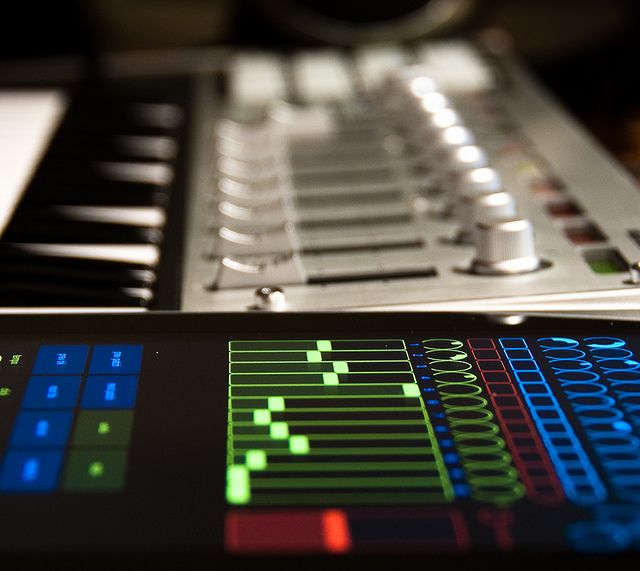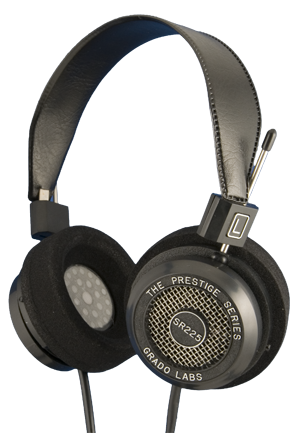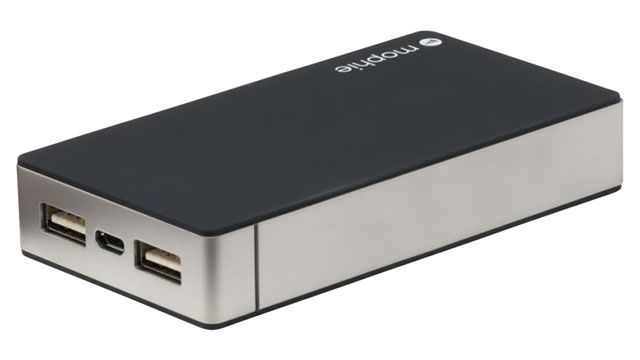When deciding whether one can justify the purchase of a tablet, rarely does "music production" factor into the decision-making process – but it should. If there's one reason to pick an iPad over the rest, it's the richness of apps available on the platform, and music apps are no different.
I've been fiddling with iOS synthesizers, drum machines, effects processors and full-blown DAWs since my first iPhone 4, and over the last couple of years the options for music creation on iOS have grown tremendously. Finally, the iPad is a full-blown production, composition and performance tool.
A Mobile Studio
You can be forgiven for not feeling inspired or particularly creative while sat at your desk or huddled around a mess of wires and MacBooks. Personally, I'm far more likely to come up with a good idea at an inopportune moment, and the mobility provided by a tablet means you can capture your ideas regardless of where you are.
Whether you choose to go somewhere special to you, somewhere you simply can't take traditional production equipment or you're travelling by train or airplane, taking yourself out of the same old environment is a great way to get your creativity flowing. Who knows if you would have written a particular groove or melody simply sitting at home?
Production on an iPad isn't as fiddly a process as it is on a Mac or PC, much of the time due to software constraints. Software tends to focus on user-friendliness over feature-richness, though exceptions to this rule do exist. These differences make the creative process feel more focused on sketching ideas you are happy with, rather than producing highly polished pieces of music. That said, if you're already invested in Logic for production purposes you can finally work from an iPad with the free Logic Remote.
Tablet music production might be considered more "fun" due to the easier learning curve and accessibility of touchscreen apps. There's no reason you can't integrate the grooves and melodies you come up with into existing projects, or add to your work with a range of apps to produce a finished product.
As An Instrument
I'd love a full-blown Moog synthesizer, but I've got nowhere to put it and I'd probably never play it enough anyway. That's before you've even considered the five thousand dollar price tag I'd have to lay down for the Minimoog Voyager XL. By comparison, I can pay $30 for Animoog. It sits on my iPad, rather than in the corner of my room, and it too produces dreamy tones worthy of the Moog badge.
Naturally, one is going to sound better than the other – and only one is truly analogue. That said, you can vastly expand the range of sounds at your disposal with a few careful purchases, and what's more you can sample, sequence and even play them live. Missing a drummer or bassist? Why not replace them with an app...
A great deal of classic synthesizer models have been faithfully emulated, like KORG's iMS-20 ($20) and iPolysix ($20). Arturia have a thing for classics, emulating both the 1971 Minimoog ($10) and the 1974 Oberheim SEM ($10). There are also products like Sunrizer, NLOG Synth and CASSINI which don't target any specific synth, but instead emulate a range of them.
Any good dedicated synthesizer app worth its asking price will have support for MIDI input, so you can play it as if it were a piece of hardware. Already have a MIDI keyboard? Grab yourself a camera connection kit and some basic USB MIDI connectors. Need drums? Check out our recent article all about iOS drum machines and synths. Hungry to build your own custom MIDI interface for performance or studio control? TouchOSC ($4.99) is exactly what you've been looking for.
Bang For Your Buck
Despite the rather high entry-fee, making music on an iPad is a fairly cost-effective option for users looking to go iOS-only or integrate virtual instruments into their existing workflow. The relatively low price point of most mobile apps has pushed the price of synthesizers, drum machines and whole workstations to highly affordable price points. These prices just look silly when you start comparing them with actual hardware.
And despite the relatively accessible pricing, the sounds aren't bad. As an example, Properllerheads sell Reason for $399, but you can buy a small slice of it in the form of the flagship Thor synth for $15. KORG recently released Gadget, complete with pattern sequencer, automation and 15 instruments for the just short of $40 (their priciest app yet). I've waxed lyrical before about my love for Nanostudio, a $14 DAW for iPad that comes with the amazing Eden synthesizer and a simple sampler without breaking any budgets.
The trade-off is that no iPad DAW exists yet with the level of automation or functionality provided by the industry-leaders. Choosing iOS means forgoing some of the advanced features you'll probably figure out you want eventually, but won't necessarily even understand straight away. Here's hoping a changing trend in spending habits convinces developers that iOS users appreciate serious software too.
Don't Boo The Support Act
You don't get an operating system that's home to so many quality synths and production tools without developing a following, and the iOS music scene is rapidly gaining pace. This came to a head last year with the long-awaited release of AudioBus ($4.99), the first third-party method of connecting audio apps to facilitate recording into DAWs and processing with apps like Filtatron ($7.99).
Apple soon decided they needed to standardise, and upon making GarageBand free to all, they also made their Inter-App Audio standard a GarageBand native. Now we have a free, basic DAW for iOS that includes the ability to route audio and apply effects – and support continues to grow. Truth be told: if you don't use GarageBand, AudioBus is definitely the better option.
There's also support for Core MIDI, which allows you to connect an Apple camera connection kit to a set of MIDI cables (or a dedicated iPad interface). You can then use apps like Little MIDI Machine [No Longer Available] to control your external hardware, or optionally use a MIDI controller or keyboard to control your software. Provided your MIDI hardware doesn't use any proprietary drivers, it should just work.
A Few Things To Remember
Making music on a tablet introduces a few quirks that desktop-based users don't have to endure. First of all is the issue of what you're hearing – you're probably going to need some headphones. And generally, the headphones or earphones you use for listening to music are the absolute worst things for production – an environment where a flat, neutral response is vital.
Avoid Beats by Dre, Apple earpods or cheap nasty cans. Leave that fuzzy overblown bass in the club, learn about brands like Grado and Stax. You don't need the $1500 pair, Grado make some Monster-destroying $125 and $200 cans that'll make even the most fashion-conscious among you question past purchasing decisions.
The other thing is battery life. Synthesizers, DAWs and mediating apps like AudioBus will destroy your battery – these are processor-intensive operations. If you expect to be travelling or away from a socket for a while, it might be worth considering an external battery like Mophie's Powerstation line.
Lastly, older devices can really struggle when it comes to demanding music apps. Your mileage might vary with regards to processing effects, running multiple synthesizers or playing back especially complex tracks in certain DAWs.
If you have learned anything interesting about iOS music production, drawn your own conclusions or have productions you've made and are happy to share then leave a comment below.
Images: Mini Studio (Taco Ekkel), KORG Polysix (Svuntutheysari), Bus Stop (Incase.)

